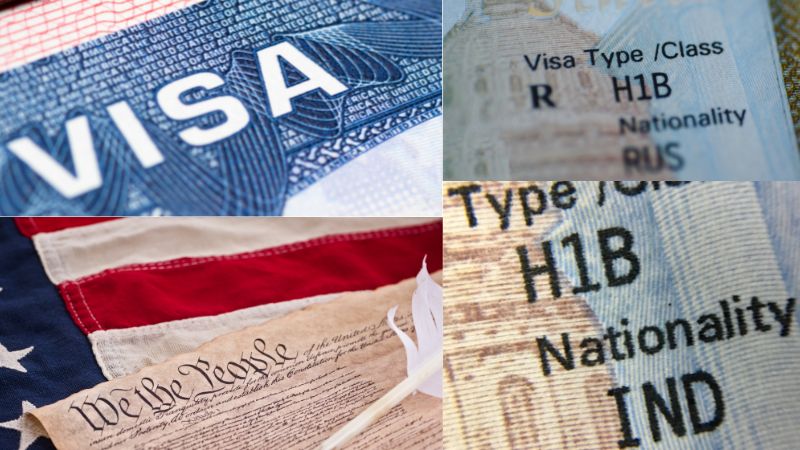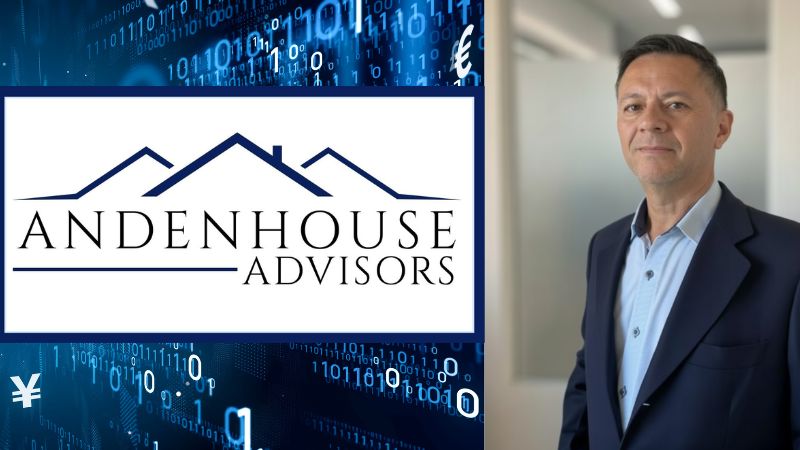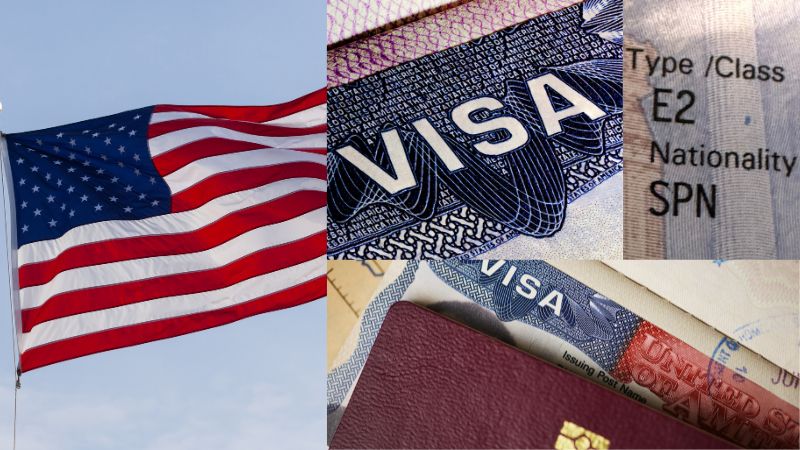The Chaos Behind the Curtain
In recent weeks, U.S. employers and international professionals have been thrown into uncertainty once again following the administration’s abrupt announcement of a $100,000 filing fee for new H-1B petitions for workers located abroad. The change, introduced with little notice, sent shockwaves through corporate America and beyond. Major employers such as Amazon and Microsoft reportedly advised foreign-born employees traveling overseas to return immediately, fearing the new rule could lock them out.
This latest upheaval underscores a deeper reality: the H-1B visa program, often invoked in debates about immigration and job protection, is not a simple contest between “American” and “foreign” workers. It is a complex system riddled with contradictions, outdated processes, and unintended consequences that reach far beyond Silicon Valley boardrooms.
Below, we explore several of these underlying issues and how recent changes could harm not only tech firms but also schools, hospitals, and entire local economies.
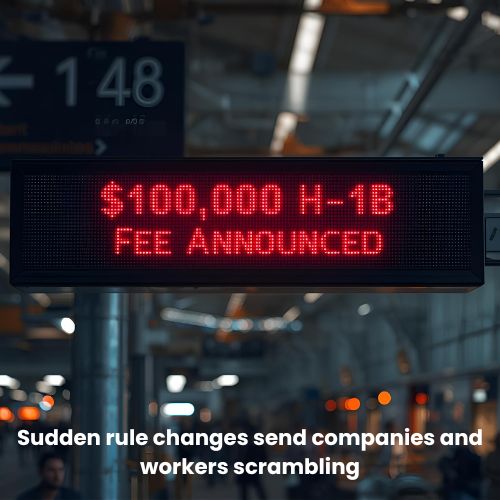
1. “Hire American” Policies Can Push Jobs Abroad
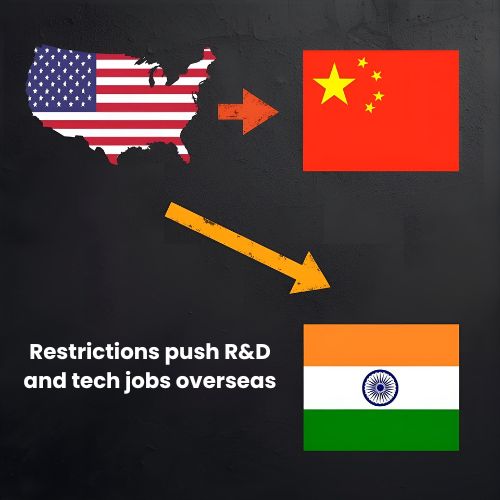
The intent behind the new $100,000 fee appears straightforward: make foreign labor expensive enough that companies hire domestically instead. But history and research suggest the opposite often happens.
Studies, including one by Britta Glennon of the Wharton School, show that when H-1B restrictions tighten, firms don’t necessarily hire more U.S. workers. Instead, they shift R&D and tech operations overseas, particularly to India and China. Rather than creating local jobs, such policies can accelerate offshoring, taking innovation and investment with them.
In short, by trying to “protect” American workers, restrictive measures risk sending high-skilled industries abroad and reducing future domestic opportunities.
2. The Real Victims: Schools, Universities, and Hospitals
While the public tends to associate H-1B visas with Big Tech, tens of thousands of nonprofit and public institutions depend on them to fill essential roles, often in education and healthcare. Universities, public school districts, and medical centers use the program to hire teachers, professors, and physicians in specialized fields where U.S. talent is scarce.
The sudden imposition of a $100,000 fee could devastate these organizations. Many are cap-exempt employers, meaning they rely on H-1B hiring outside the annual lottery. Yet under the new rule, these same institutions now face unexpected costs that could make hiring impossible.
Superintendents warn that losing foreign-born math, science, or special-education teachers will lead to larger class sizes or unqualified substitutes. University presidents and hospital administrators have expressed similar fears: longer wait times for patients, unfilled faculty positions, and reduced research output.
As Bard College president Leon Botstein put it, “It’s not patriotic. It harms the economy and has nothing to do with excellence.”
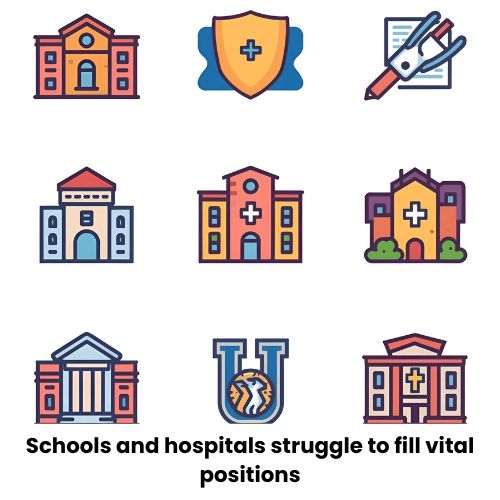
3. Outdated Regulations and “Phantom” Job Ads
The H-1B program’s dysfunction doesn’t end with fees. Under the current Permanent Labor Certification (PERM) process, required to sponsor a foreign worker for a green card, employers must “prove” they tried to hire a U.S. worker for a position already held, often for years, by the person they wish to sponsor.
This leads to an absurd ritual: posting classified ads in Sunday print newspapers, long after most recruiting has moved online. These ads are rarely intended to attract real applicants; they exist solely to satisfy a decades-old bureaucratic requirement. Even immigration attorneys admit the process has become a mere formality rather than a meaningful labor-market test.
Such anachronistic compliance requirements not only waste time and resources but also erode public trust in the system.
4. The 85,000 Visa “Cap” Misleads the Public
The H-1B program is often described as a small, capped system, a lottery offering just 85,000 new visas each year. But this is only part of the picture. In reality, hundreds of thousands of petitions are approved annually outside that cap, including renewals, transfers, and cap-exempt hires by universities and nonprofits.
According to U.S. Citizenship and Immigration Services data, an average of over 200,000 H-1B approvals each year fall into these categories. The program, therefore, supports a large, semi-permanent workforce, many of whom wait in green card backlogs that can last a decade or more.
This mismatch between perception and reality makes reform both urgent and politically fraught. The system is far more entrenched and economically significant than many policymakers realize.
A System of Unintended Consequences
The H-1B program embodies a paradox: policies meant to protect U.S. jobs can instead export innovation, weaken essential public services, and trap skilled professionals in bureaucratic limbo. What should be a dynamic bridge for global talent has become a patchwork of outdated rules and competing political objectives.
For employers and professionals navigating this turbulence, strategic guidance is more critical than ever.
How Andenhouse Advisors Can Help
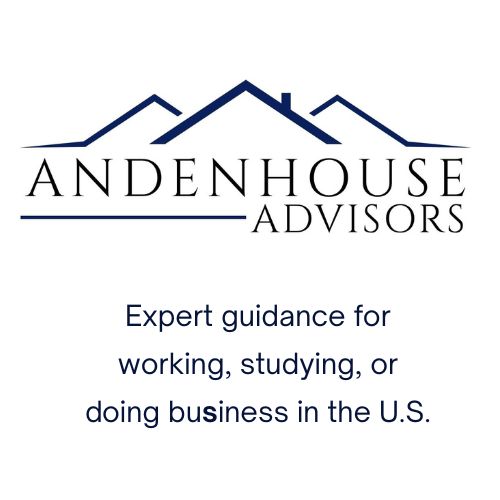
✨ Andenhouse Advisors helps you turn your investment vision into a successful E-2 visa approval and thriving U.S. business operation.
At Andenhouse Advisors, our experts help individuals and organizations work, study, live, or establish businesses in the United States — even amid shifting regulations. Whether you’re an employer seeking to build a compliant talent strategy or a professional exploring your options for U.S. employment or entrepreneurship, our team provides the clarity and insight needed to move forward confidently.
📩 Contact us today to schedule a consultation and explore how we can help you turn change into opportunity.
Services Andenhouse Advisors Offers
Do you want a 30-minute free consultation? Please complete our intake form.

